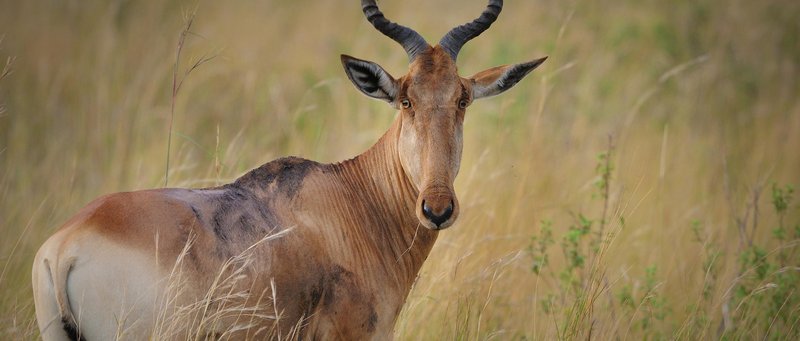
Imagine a world where grasses stretch for miles, dotted with acacia trees and the sounds of wildlife fill the air. This is the typical landscape of a hartebeest’s home. With their long faces and impressive horns, these animals have adapted beautifully to the environments they inhabit. Understanding their habitat helps us appreciate these creatures and their role in the intricate web of life in African ecosystems.
Geographical Distribution of Hartebeests
Hartebeests are primarily found in sub-Saharan Africa, where they roam open grasslands and savannas. Their range extends across several countries, including Uganda, Tanzania, and parts of southern Africa. What’s interesting is that these antelopes have adapted to various environments within their range. So, whether it’s the dry savannas of the Serengeti or the lush grasslands of Botswana, you can spot hartebeests grazing peacefully.
They typically prefer areas with short grasses, as these are easier for them to digest. Hartebeests have home ranges that can vary significantly depending on the region and the availability of food and water. In areas with plentiful resources, you might find them in larger groups, while in harsher conditions, they may become more solitary.
Types of Hartebeests and Their Habitats
There are four main species of hartebeests: the Congo hartebeest, the puku, the topi, and the Bubal hartebeest. Each of these species has adapted uniquely to their specific habitats. For example, the Congo hartebeest tends to thrive in more densely vegetated areas like floodplains and marshlands, while the topi prefers the open plains.
- Congo Hartebeest: Found in wetter areas, often near rivers and swamps.
- Puku: Lives in wetlands and grasslands, mostly in Zambia and Botswana.
- Topi: Occupies open savannas and is known for its speed and agility.
- Bubal Hartebeest: Now extinct, previously roamed North Africa’s grasslands.
Each species has its own unique adaptations that allow it to thrive in its respective environment. Understanding these differences not only highlights their unique characteristics but also emphasizes the importance of preserving their habitats.
Physical Adaptations for Habitat Survival
Hartebeests have several adaptations that help them survive in their preferred habitats. First and foremost is their unique body shape. With long legs and a slim body, they’re built for endurance rather than speed. This design allows them to cover vast distances in search of food and water, which is crucial in the often harsh climates of Africa.
Another key adaptation is their specialized digestive system. Unlike many other herbivores, hartebeests have a ruminant stomach, which helps them break down tough plant materials. This ability allows them to thrive on grasses, making them less dependent on other food sources during dry seasons.
Here’s the thing: these adaptations are not just fascinating; they’re essential for survival. As their habitats change due to climate change and human activity, these physical traits give them a fighting chance against extinction.
Impact of Seasonal Changes on Habitats
The habitats of hartebeests are deeply influenced by seasonal changes. In the dry season, water sources can become scarce, pushing them to migrate in search of greener pastures. During this time, they rely on their social structures. Young hartebeests often stick close to their mothers, while males may form small bachelor groups.
As the rainy season approaches, the landscapes transform. Grasses grow tall and lush, providing plenty of food for hartebeests to graze on. The increased availability of water also allows for larger herds to gather together, creating an impressive sight on the African plains.
This seasonal rhythm is vital for hartebeests. It not only affects their feeding habits but also plays a role in their breeding cycles. They tend to give birth during the rainy season when food is abundant, ensuring the survival of their young.
Human Influence on Hartebeest Habitats
Unfortunately, the habitats of hartebeests are not without threat. Human activities such as agriculture, urban development, and poaching have significantly impacted their living spaces. As farmland expands, the natural grasslands where hartebeests thrive are shrinking. This loss of habitat not only reduces their numbers but also disrupts their migration patterns.
Conservation efforts are critical to protect these animals and their habitats. Protected areas like national parks play a vital role in providing safe spaces for hartebeests to live and breed. Organizations working toward wildlife protection often conduct research to better understand the movements and needs of these animals, helping to create strategies that ensure their survival for future generations.
The Role of Hartebeests in Ecosystems
Hartebeests are more than just residents of the African plains—they’re also key players in their ecosystems. As grazers, they help maintain the health of grasslands by preventing overgrowth of certain plants. This grazing activity creates a balance, allowing various species to coexist.
Additionally, their presence supports a range of predators, including lions and hyenas. When hartebeests move in herds, they become a food source for these predators, contributing to the natural balance of the ecosystem. This dynamic highlights the importance of conserving their populations.
Without healthy populations of hartebeests, the ripple effects in the food chain could lead to a decline in predator species and disrupt the habitats where they live.
Final Thoughts on Hartebeest Habitats
So, where do hartebeests live? Essentially, they thrive in open grasslands and savannas across sub-Saharan Africa, adapting beautifully to their diverse environments. From their unique physical adaptations to their roles in the ecosystem, these animals are a reminder of the intricate connections between all living things.
As we wrap up, it’s clear that understanding where hartebeests live helps us recognize their importance in our world. Whether it’s through conservation efforts or simply appreciating their beauty on a safari, we all have a role to play in ensuring these remarkable creatures continue to roam the African landscapes for generations to come.
